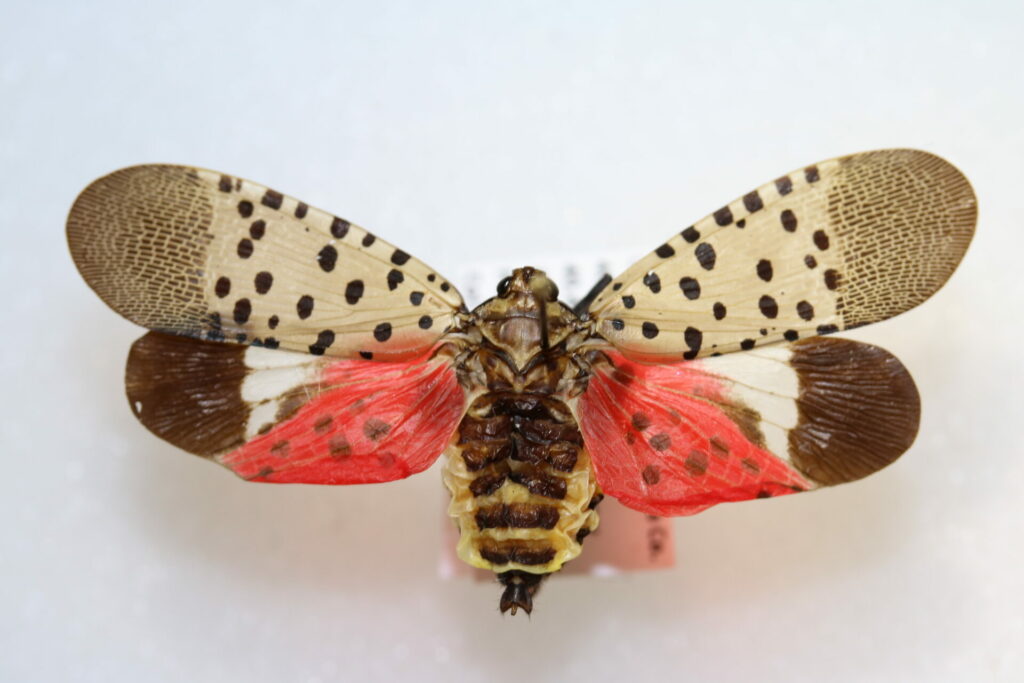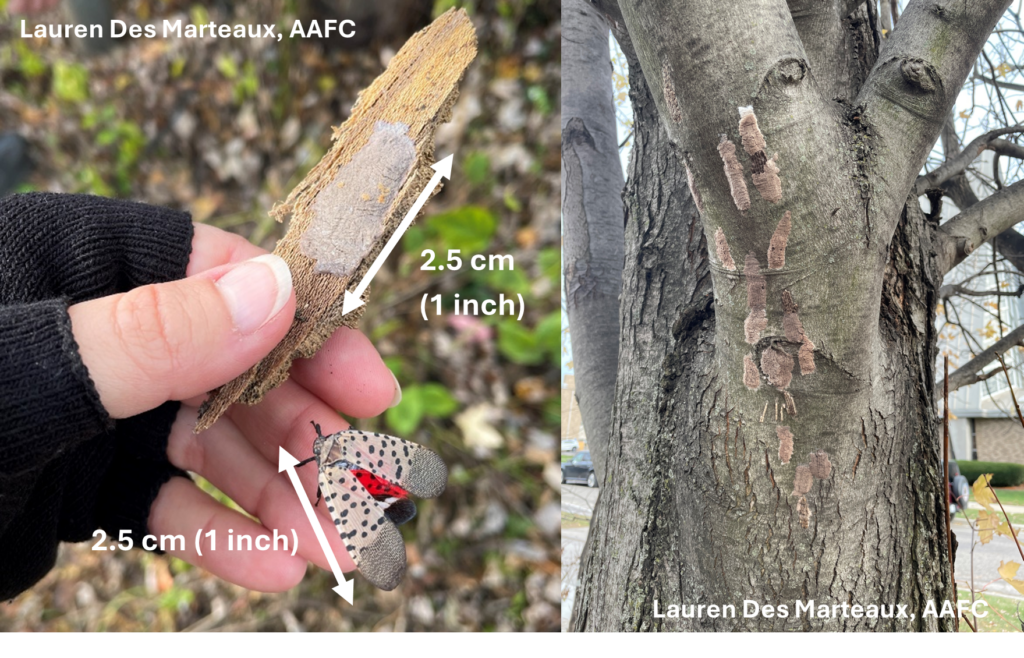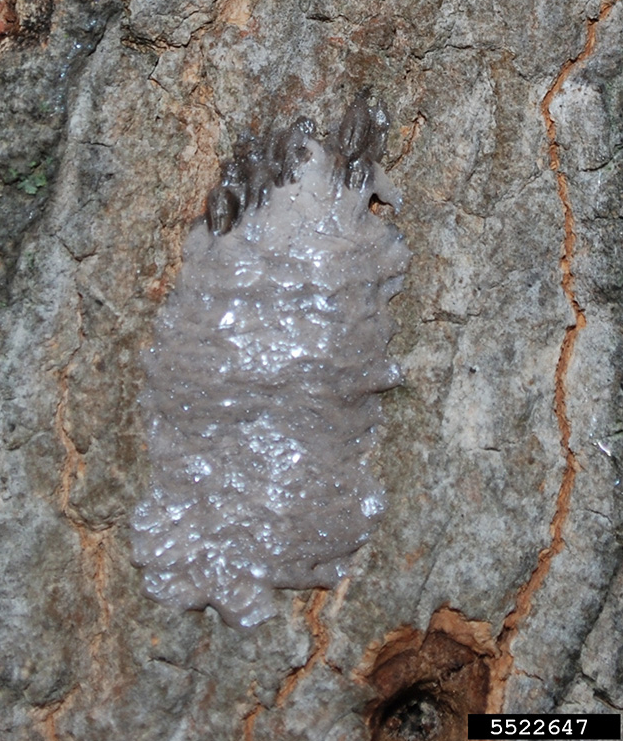Spotted lanternfly is not established in Canada as of May 2025.
Spotted lanternfly is an invasive alien species to North America that originated in Asia. The first established population of spotted lanternfly was detected in the eastern United States in 2014. The distribution of spotted lanternfly has expanded in the United States from the original detection and infestations are now observed in the US close to the Canada-US border. The spotted lanternfly is a CFIA regulated pest. Please report all sightings of spotted lanternfly to the CFIA.

Spotted Lanternfly Identification and Life Cycle
Eggs are laid in masses about 1 inch (25 mm) long. Egg laying occurs in late summer and through the fall until it gets too cold. Each egg mass contains up to 50 oblong-shaped eggs that are laid in vertical rows. When first laid, the eggs are covered with a protective coating that looks like grey wax or putty. As egg masses age, the coating is lost and the shape of individual eggs becomes more obvious. Spotted lanternfly often lay egg masses on protected surfaces, including the underside of branches and under peeling bark. Eggs can be laid at any location on a tree, from the base of the trunk to the highest branches. Egg masses can also be laid on other smooth surfaces, like vehicles, shipping pallets, and buildings.

Eggs hatch in spring. There are 4 nymphal instars that develop through spring and summer. Early instar nymphs are black with white spots. Late instar nymphs are black and red with white spots. The legs of all nymph instars are black with white spots.

Adults are active in mid- to late summer. Adults are about 25 mm (1 inch) long. When sitting on a branch, they are approximately 12 mm (0.5 inches) wide. The head and legs are dark brown or black and the abdomen is dark brown with yellow stripes. The forewings are tan-coloured. About 2/3 of the forewings are covered with dark brown spots; the wingtips are characterized by broken brown stripes. The hindwings are bright pink near the body with white/light tan and dark brown/black stripes towards the wing-tips. The bright coloured hindwings are usually covered by the forewings when adult lanternflies are at rest or walking.
Spotted lanternfly are quite unique from other insects found in Canada, helping to make them distinctive and easy to identify.
Spotted lanternfly adults and nymphs are generalists and are known to feed on over 100 different host plants. Their preferred host is Tree of Heaven, which has not been observed or recorded in Alberta, Saskatchewan, or Manitoba. Other hosts include grapevine, fruit trees (cherry, peach, apple, pear, etc.), willow, poplar, and pine. Feeding activity and feeding damage has also been reported on vegetable plants.
Watch for and report all sightings of spotted lanternfly in Canada!
Everyone can help prevent the establishment of spotted lanternfly in Canada by using visually inspecting trees and plants for spotted lanternfly egg masses, nymphs and adults. For visual inspections:
- Identify potential host trees for inspection. The preferred host is Tree of Heaven, which is not reported to occur on the prairies. Other favoured hosts include grapes, apples, plums, cherries, peaches, nectarines, pine, willow, and poplar trees.
- In fall and spring, inspect smooth-barked host trees for egg masses, from the ground to the highest point on the tree that you can safely reach. Look for eggs on other smooth surfaces, including vehicles, rocks, lawn furniture, etc. Be especially vigilant and inspect your vehicle if you have travelled to areas of the US where spotted lanternfly is established.
- In late spring and summer, inspect host trees for spotted lanternfly nymphs and adults. Nymphs and adults can be easier to observe around dawn and dusk because they migrate up and down trees as the day passes.
- Report all observations of spotted lanternfly to the CFIA because spotted lanternfly is a regulated pest in Canada.
For more information about spotted lanternfly, check out the CFIA Factsheet, the USDA Factsheet, and the Penn State Extension management guide.


